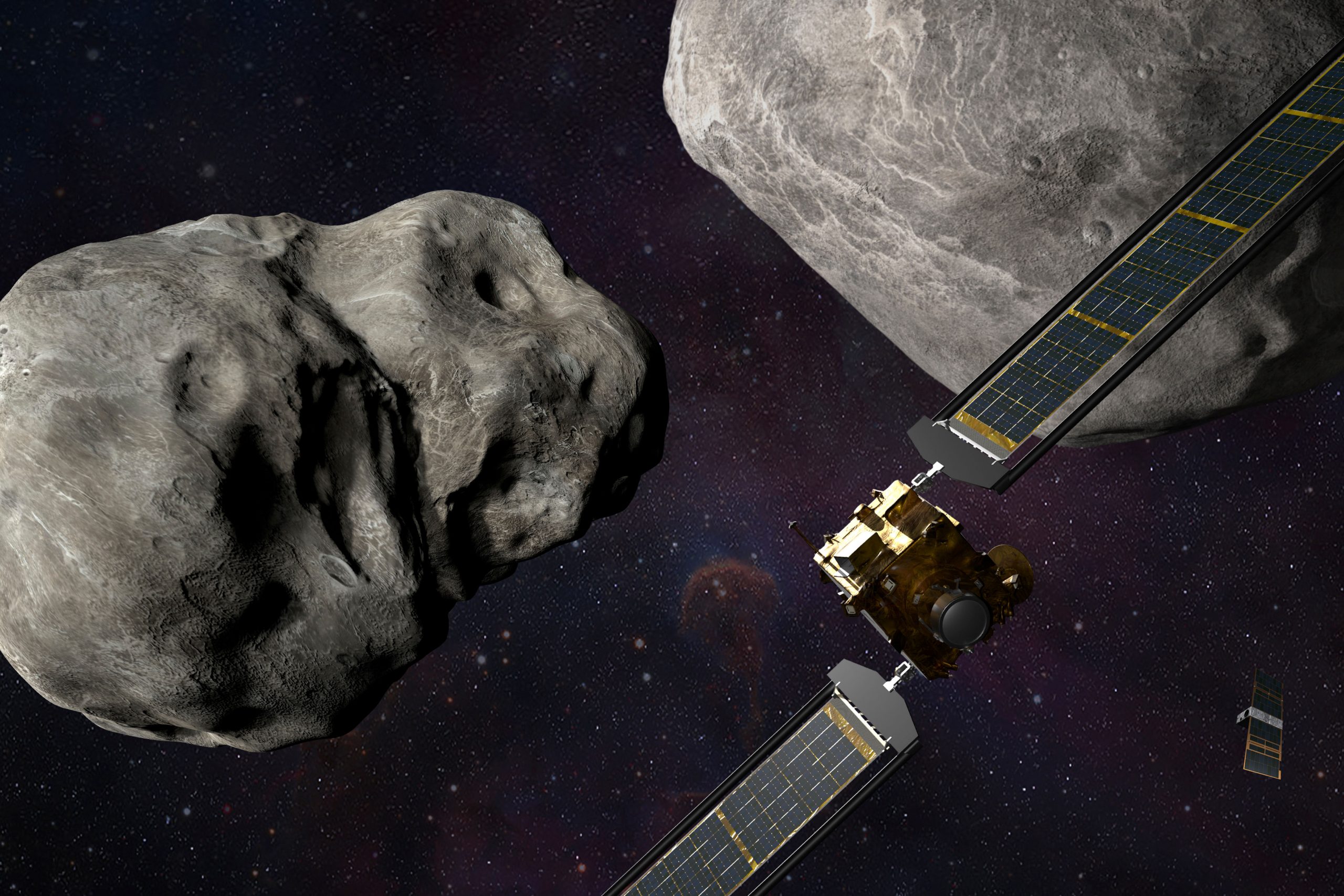NASA has put its DART spacecraft on a collision course with asteroid Dimorphos, which is about 9.6 million kilometers from Earth. The impact is scheduled for September 26, 2022, at 7:14 PM EDT. The DART mission is the first of its kind mission that replicates a save-the-earth from asteroids scenario.
The DART spacecraft will strike the asteroid at a speed of 22,500 kilometers per hour. It is expected to give the asteroid a nudge and divert its path. “This really is about asteroid deflection, not disruption”, an expert working on the DART mission said.
Also Read: DART mission: When and where to watch NASA’s asteroid collision project
The threat of an asteroid strike is small, but it does exist. Scientists are on the constant lookout for asteroids in the Milky Way Galaxy and beyond that may pose a threat to Earth. Such objects are called Potentially Hazardous Asteroids (PHAs) and are cataloged by NASA. As of early 2013, at least 1,400 such asteroids have been discovered.
Planet Earth is on an asteroid-chasing roll. NASA has close to a pound (450 grams) of rubble collected from asteroid Bennu headed to Earth, news agency Associated Press reported.
The stash should arrive next September. Japan was the first to retrieve asteroid samples, accomplishing the feat twice. China hopes to follow suit with a mission launching in 2025. NASA’s Lucy spacecraft, meanwhile, is headed to asteroids near Jupiter, after launching last year.
Also Read: All about asteroid Dimorphos, the target of NASA’s DART mission
Another spacecraft, Near-Earth Asteroid Scout, is loaded into NASA’s new moon rocket awaiting liftoff; it will use a solar sail to fly past a space rock that’s less than 60 feet (18 meters) next year. In the next few years, NASA also plans to launch a census-taking telescope to identify hard-to-find asteroids that could pose risks.
One asteroid mission is grounded while an independent review board weighs its future. NASA’s Psyche spacecraft should have launched this year to a metal-rich asteroid between Mars and Jupiter, but the team couldn’t test the flight software in time.







